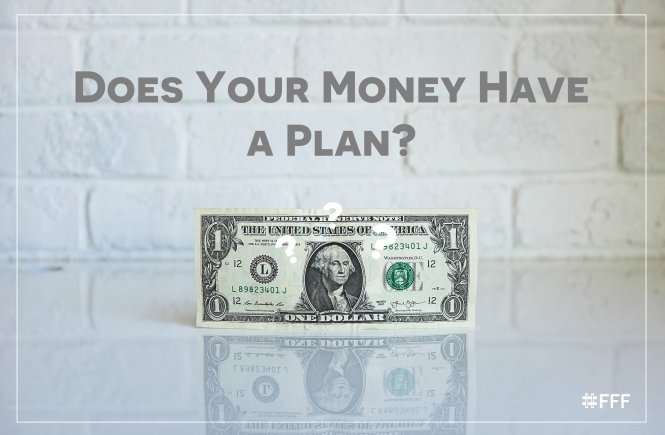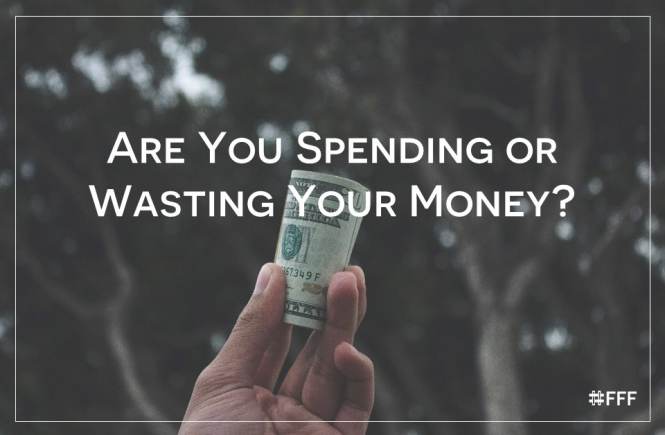How much money did you invest in yourself last month? It is a tricky question because we pay what we need and want throughout the month without giving much thought to it. If we don’t give much thought to what we are actually paying chances are that a lot of money that could’ve been invested in yourself is wasted. This is the reason why every person should have a money plan, why waste our money when we instead could spend it on making ourselves happier on a deeper level.
I’ll bring back one of the reflection questions from two weeks ago:
“What would it mean to me to control my money?”
Before we go into making our actual money plan I want to highlight the part control plays in money planning. Having a money plan is all about gaining control over our finances, but there are two types of control that will come into play. Having control over your money is about being in charge and aware of every decision that is made about your money and to be able to be fully in charge self-control is needed. It is when we don’t have self-control to draw the line between what we want and what we should do that we start to lose control over our money. Having a money plan will not magically give you self-control, what a money plan does is to give your self-control guidance of where to draw the line. We therefore first need to be clear on what kind of control we need and want to have over our money.
Create Your Money Plan
Let’s get started with what we are all here for, let’s make our money plan! I will divide the process into different steps to build your money plan.
Step 1 – Money In
The very first step is to identify what we have to work with, how much money do we get each month? Either you have a steady income and receive the same amount each month or you have different income each month. It could also be that you have no incomes and you’re living off your savings and in this case your money plan is equally if not more important.
Action Step!
If you have a steady income – Take a piece of paper and write down the total amount of income you get in one month.
If your income varies from month to month – Take a piece of paper and write down the income you’ve had the past five months. Identify if there is a big or small difference between the months, calculate your average income, if there is a big difference each month identify how much you have to save during the “good” months o you can use that to cover up for the “bad” months and by doing this find an average.
If you have no income – Take the total amount of money that you have to support yourself, divide it over the number of months that you expect to support yourself with this money (if you’re unsure add some months as a buffer).
Step 2 – Money Out Part I
Unfortunately we can’t use all the money we get in our income to whatever we feel like, there are some expenses we have to pay. In this step we want to identify all types of expenses that occur the in one month that has a fixed amount, this would be your rent, insurance, transportation and similar.
Action Step!
Applies to all – On your piece of paper, write down fixed expenses and add all the categories you identified above. Next to each category add the number of what your expenses are for each category. Calculate the total amount and add to the bottom.
Step 3 – Money Out Part II
There is another group of expenses that we need to identify, these expenses are what we need to pay for survival (food) and other necessities (shampoo).
Action Step!
Applies to all – Write down the headline variable expenses and write all the survival and necessity categories you can think of that you have in your life. Try to identify a reasonable amount of money that you should spend on each category in one month and calculate the total. The key point when deciding the amount is to go as low as possible while still being able to live a life that you would like. Don’t be afraid to try lower numbers than you might think, sometimes we don’t miss some expenses as much as we would think and the worst thing that can happen is that you need to adjust your plan for the next month.
Step 4 – Find Out Your Number
Many think that planning your money is all about step 1 – 3 but the truth is that those steps are just the preparations. You need a strategy to make sure that your expenses are kept as low as possible because it is something we have to pay and we don’t want to waste any money there. We want to leave as much money as possible to invest in ourselves and we want to plan how to invest it.
Action Step!
If you have an income – Calculate the total of your expenses from step 2 and 3. Take your income and subtract your total expenses, write down the number you get.
If your income varies from month to month – Calculate the total of your expenses from step 2 and 3. Take the average you calculated in step 1 and subtract your total expenses, write down the number you get.
If you have no income – Calculate the total of your expenses from step 2 and 3. Take the amount you calculated in step 1 and subtract your total expenses, write down the number you get.
Now you have identified the number you have to work with and you can do exactly what you want with this money.
Step 5 – Plan Your Money
Like I said, you can do exactly what you want with the money you calculated in the previous step, but you don’t want to waste it, you want to invest it in something that makes you happy. Let’s plan this money into two categories that will improve your life.
- Invest in yourself
- Save
You might be thinking “I don’t care about savings”, but you definitely should because savings are not just something boring that we should do, it’s also an investment in ourselves. Your savings will create opportunities and security for yourself in the future and it’ll enable you to do even greater things that you love that doesn’t fit in one pay check. Don’t worry, the whole point of having a money plan is so that you can start saving without noticing. During step 2 and 3 you identify what you have to pay and by gaining control over those expenses there will be more left overs to invest in yourself and put in your savings account. We will now plan for these left overs and how to use them.
Action Steps!
Applies to all:
- Starting with the savings, identify an amount you feel comfortable with saving each month to build reserves that creates security and can be invested in yourself in the future. The amount cannot be higher then the total amount you have to work with from step 4.
- After subtracting the savings calculate how much money you have left to invest in yourself short term.
- Make a list of everything you love.
- Take the amount you have left after your savings and distribute it over your list. Of course the distribution can be different each month and you should reflect over where you want to invest that money to maximize your happiness.
You have now completed your money plan! You might have gone through different feelings throughout the process, maybe you realize that you don’t have much money left to put in your savings and invest in yourself. This means that either you are living a very comfortable life and should review your expenses from step 2 and 3, are all of them necessary? Can you cut any? Or it could mean that you have a low income. Not to worry, it doesn’t have to be like that for your whole life and in the meantime it is a great opportunity to build low cost habits, learn to enjoy life with less money and create a better financial awareness. In this case the money plan will help you to allocate the few resources you have in the most efficient way to maximize the money you actually have available.
Remember that your money plan will give you control over your finances but only if you let it guide your self control to ensure that you stick to your plan. What the plan does for you is to cut out all the crap so you can spend your money where it matters.




